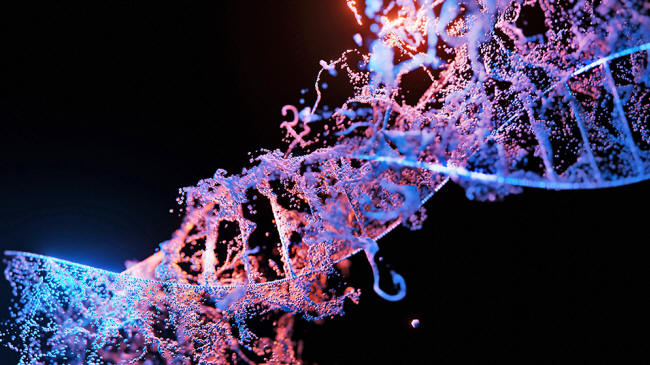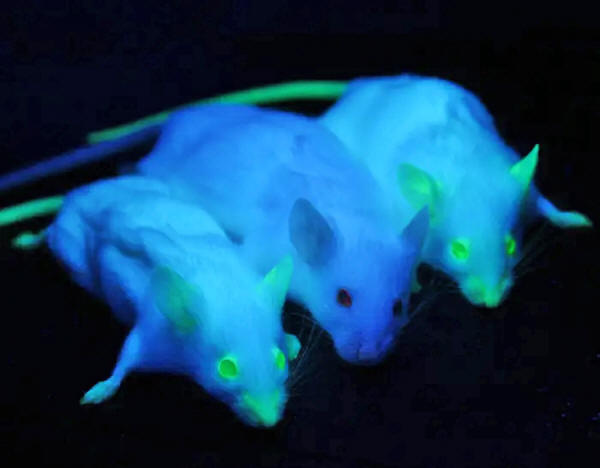|

by Amanda Brown
March 27,
2022
from
WesternStandardOnLine Website
Spanish
version

Sangharsh Lohakare
via
Unsplash
"Preposterous!" you say, but the director of Policy
Horizons Canada who created the report was formerly the
head of Strategic Foresight at the 'World Economic
Forum,' the global home of all things Technocratic and
Transhuman, i.e., the
Great Reset.
Source
Canada
explores transhuman society.
The report
examines the implications
of the
assimilation of digital technologies,
that in essence,
would fundamentally
re-imagine life
on
an individual,
environmental,
and societal
level...
The Government of
Canada's think-tank, Policy Horizons Canada, published a report titled
Exploring Biodigital Convergence
looking at transhumanism.
Biodigital
convergence can be defined as,
the
intersection and synthesis of biological systems with digital
technologies, such as
artificial intelligence (AI),
biometrics and genetic engineering.
In the human
realm, this field is called
transhumanism...
The report examines
the implications of the assimilation of digital technologies with
biological entities that, in essence, would fundamentally re-imagine
life on an individual, environmental, and societal level.
More concisely, the
reconfiguration - if realized - would radically redefine,
what it means
to be human...
Transhumanism
is no longer a concept confined to a generation of cheesy Hollywood
B-movies - the technology exists right here, right now.
Policy Horizons Canada is
a federal government organization conducting policy research into
potential future scenarios for Canadian society and its economic and
industrial future.
Its mandate is to
help the Canadian government create future-oriented policies and
frameworks that anticipate emerging challenges in near and distant
time frames.
Kristel Van der Elst, the
current director general of Policy Horizons Canada and former
head of strategic foresight at the
World Economic Forum, provides an
overview in the report.
"In the coming
years, biodigital technologies could be woven into our lives in
the way that digital technologies are now.
Biological and
digital systems are converging, and could change the way we
work, live, and even evolve as a species.
More than a
technological change, this biodigital convergence may transform
the way we understand ourselves and cause us to redefine what we
consider human or natural," Van der Elst said in the report's
foreword.
"Guided by its
mandate, Policy Horizons Canada intends to start an
informed and meaningful dialogue about plausible futures for
biodigital convergence and the policy questions that may arise.
In this initial
paper, we define and explore biodigital convergence - why
it is important to explore now, its characteristics, what new
capabilities could arise from it, and some initial policy
implications.
We want to
engage with a broad spectrum of partners and stakeholders on
what 'our' biodigital future might look like, how this
convergence might affect sectors and industries, and how our
relationships with technology, nature, and even life itself
could evolve," she said.
The report's
summary describes the evolution of digital technologies as thus far
having had "powerful effects" on society, also that biodigital
convergence might present people with challenges that will,
"in ways... be
profoundly disruptive to our assumptions about society, the
economy, and our bodies."
In summary, the
fusion of nature and technology at this level will profoundly alter
systems in a variety of unprecedented ways, the report said they
will:
-
change
human beings - our bodies, minds, and behaviors
-
change or
create other organisms
-
alter
ecosystems
-
sense,
store, process, and transmit information
-
manage
biological innovation
-
structure
and manage production and supply chains
Outlining the
convergence of human and machine, the report explicitly defines
Policy Horizons Canada's vision.
"Digital
technology can be embedded in organisms, and biological
components can exist as parts of digital technologies.
The physical
meshing, manipulating, and merging of the biological and digital
are creating new hybrid forms of life and technology, each
functioning in the tangible world, often with heightened
capabilities," the report said.
The report outlines
"Three ways biodigital convergence is emerging," namely:
-
Full physical integration of
biological and digital entities
-
Co-evolution of
biological and digital technologies
-
Conceptual convergence of
biological and digital systems

Genetically engineered phosphorescent mice.
Image courtesy Ingrid Moenet et al, 2012
The document also
touches on the genetic modification of biological systems and
CRISPR gene-editing technology.
The genetic
engineering of food, resources, animals, insects, and even humans is
well past the start post.
Genetically
modified organisms (GMOs)
for agriculture have been on the world's dinner plates since the
early '90s.
The vast majority
of processed foods on the supermarket shelves now contain unlabelled
GMOs. In the U.S., you may well be served a genetically engineered
serving of salmon engineered to grow much faster than natural wild
salmon.
CRISPR gene editing
belongs to the third generation of gene editing technology.
Since its
discovery, it has attracted the attention of a great number of
researchers in various fields and has commanded significant
investment.
Researchers
published a series of articles in academia and obtained
groundbreaking research results through in-depth investigation and
study.
This technology has
developed rapidly in recent years and been widely applied in many
fields, especially in medicine.
CRISPR
technology developed in 2012 has been in commercial use for
several years.
CRISPR,
pronounced "crisper," is an acronym for ‘Clustered Regularly
Interspaced Short Palindromic Repeats.'
Its use is mostly
unregulated in Canada and the U.S.
Biodigital
convergence, however, takes the fusion of biology and tech to a
whole new level.
A 2019
article authored by Peter Rüegg
described how CRISPR technology is being used to create biocomputers
- an integration of cellular biology and nano-biotechnology.
"A team of
researchers led by Martin Fussenegger, professor of
biotechnology and bioengineering at the Department of Biosystems
Science and Engineering at ETH Zurich in Basel, have now found a
way to use biological components to construct a flexible core
processor, or central processing unit (CPU), that accepts
different kinds of programming.
The processor
developed by the ETH scientists is based on a modified
CRISPR-Cas9 system and basically can work with as many inputs as
desired in the form of RNA molecules," the article said.
In the United
Kingdom, in May 2021, the Ministry of Defence published a report
titled
Human Augmentation - The Dawn of a New
Paradigm.
In it the ministry
explores biodigital convergence in the military and defence arenas.
"Civil military
collaboration will be vital.
Relationships
with industry and academia will be key to understanding how
emerging human augmentation technologies could be repurposed or
developed for defense.
Although not
necessarily a model that Western defense organizations would
wish to replicate, China's human augmentation experimentation is
being led by the People's Liberation Army Academy of Military
Science.
United States'
Defense Advanced Research Projects Agency's (DARPA)
prominent role in the innovation ecosystem is another example of
how defence organizations could foster more mutually supportive
links with industry," the report said.
On the topic of
human augmentation - a field of biodigital convergence - the
UK's defense ministry report summarizes its predictions.
"Human
augmentation technologies will also present new opportunities
for increased survivability.
Exoskeletons
would allow personnel to wear heavier armor with less impact on
their endurance, speed, and maneuverability.
The treatment
of battlefield injuries would be transformed by enabling more
sophisticated medical care to be delivered closer to the point
of wounding.
This could
include synthetic powdered blood, optimized for battlefield
trauma, and stored at room temperature until needed.
3D-printed
tissue and organs could be designed, manufactured and applied
further forward in the medical chain with the help of
robotically assisted surgery or surgeons using telemedicine.
Each
of these technologies is in development now and could be
realized in the next 20 years," the report said.
As these futuristic
technologies continue to evolve, it's possible we may witness a
shift from the concept of vitalism.
Vitalism is the idea natural life
is purely chemical or physical in nature.
Rather, our
understanding of nature might alter to accommodate the idea that
nature is predictable, controllable, programmable, and malleable
using and integrating digital and
nano-technologies.
How we respond is
up to us...
|



